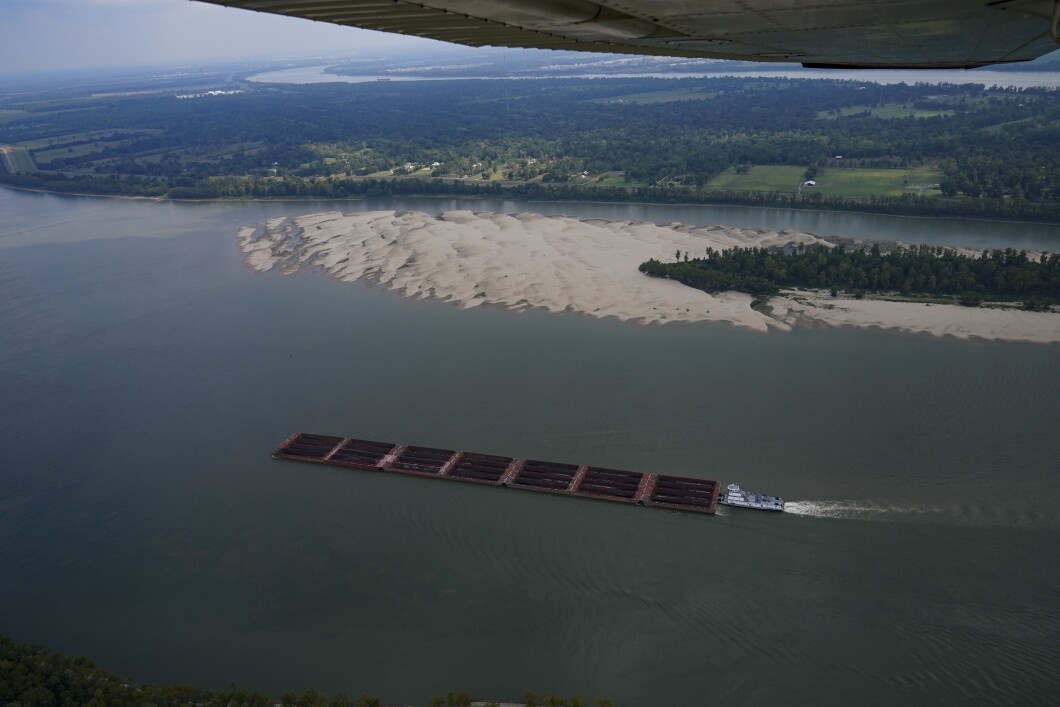
As salt water from the Gulf of Mexico creeps up the drought-stricken Mississippi River, officials in New Orleans are bracing for a threat to drinking water supply in southeastern Louisiana.
According to Gov. John Bel Edwards’s (D-LA) office, several parishes in the area have already been affected by high salt content in water, and more are at risk as freshwater flows from the Mississippi are proving incapable of fighting encroachment from the Gulf.
LUMMIS ACCUSES BIDEN OF FAVORING BLUE NEW MEXICO OVER RED STATES IN ENERGY POLICIES
Some places are anticipating salt levels exceeding the Environmental Protection Agency maximum of 250 milligrams per liter, which not only affects drinking water and increases health risks like high blood pressure, but also increases corrosion of water distribution infrastructure, as well as residential piping and faucets.
On Monday, Edwards asked the Biden administration for a federal emergency declaration to combat the saltwater intrusion, which would activate federal assets to combat the problem.
“Unfortunately, without any relief from the dry weather, we are starting to see the saltwater intrusion creep further up the river despite efforts to mitigate the problems by the Army Corps of Engineers,” Edwards said during a Unified Command Group meeting, noting the lack of rain the area has had. “We have been through this situation before in 1988, and we are monitoring this situation very closely and applying the lessons learned. It is extremely important for the public to stay informed and only rely on credible sources for updates during this event.”

New Orleans Mayor LaToya Cantrell also declared a state of emergency for the city on Friday, noting USACE and the Sewerage and Water Board of New Orleans are exploring solutions to the problem, including bringing in barges or tanker ships with fresh water to mix with the salinated water to reduce overall salt content. According to the mayor’s office, Plaquemines Parish, which neighbors New Orleans to the south, has already instituted this technique.
“The Corps is securing water barges that will support impacted water treatment facilities by transporting water collected from portions of the river that do not have salinity readings,” USACE New Orleans District Commander Col. Cullen Jones said in a Monday statement. “This water can then be combined with water at the municipal facility to create a mixture that is safe for treatment.”
Other options include the process of desalination, which uses reverse osmosis to convert salt water into fresh water, and pumping fresh water from neighboring parishes into the affected water systems. Cantrell’s office noted that the SWBNO does not currently have desalination capabilities in-house.

Estimates show the salt water, known as a “wedge,” could reach water intake facilities in Belle Chasse, Plaquemines Parish’s largest community, by Oct. 13 and would reach New Orleans later that month. Some residents in Plaquemines Parish have already been relying on bottled water since the summer.
According to USACE, the Mississippi River is particularly susceptible to saltwater intrusion because its mouth sits well below sea level, allowing the higher-density saline water from the Gulf to seep in and flow upstream along the riverbed.
CLICK HERE TO READ MORE FROM THE WASHINGTON EXAMINER
While not experiencing a drought, the Mississippi River’s freshwater flows are enough to combat the intrusion, but because of the historic low water level, salt is threatening the region. The river must maintain a freshwater flow of at least 300,000 cubic feet per second to combat encroachment, but the river is flowing at less than half of that, clocking in at 148,000 cubic feet per second.
USACE is currently expanding an underwater barrier, a sill constructed in July, designed to delay the flow of salt water upriver.





